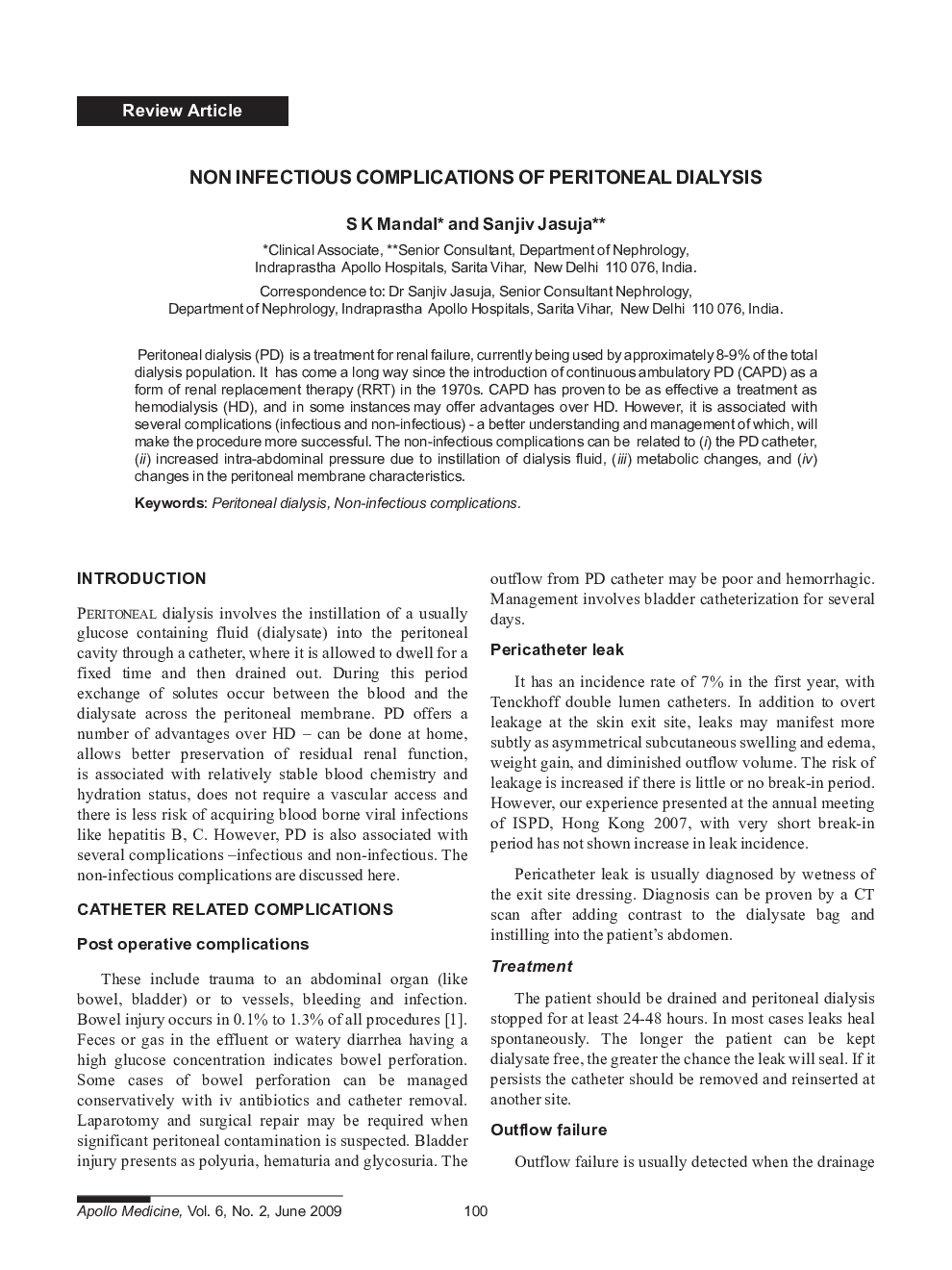| Article ID | Journal | Published Year | Pages | File Type |
|---|---|---|---|---|
| 3235414 | Apollo Medicine | 2009 | 5 Pages |
Peritoneal dialysis (PD) is a treatment for renal failure, currently being used by approximately 8-9% of the total dialysis population. It has come a long way since the introduction of continuous ambulatory PD (CAPD) as a form of renal replacement therapy (RRT) in the 1970s. CAPD has proven to be as effective a treatment as hemodialysis (HD), and in some instances may offer advantages over HD. However, it is associated with several complications (infectious and non-infectious) - a better understanding and management of which, will make the procedure more successful. The non-infectious complications can be related to (i) the PD catheter, (ii) increased intra-abdominal pressure due to instillation of dialysis fluid, (iii) metabolic changes, and (iv) changes in the peritoneal membrane characteristics.
